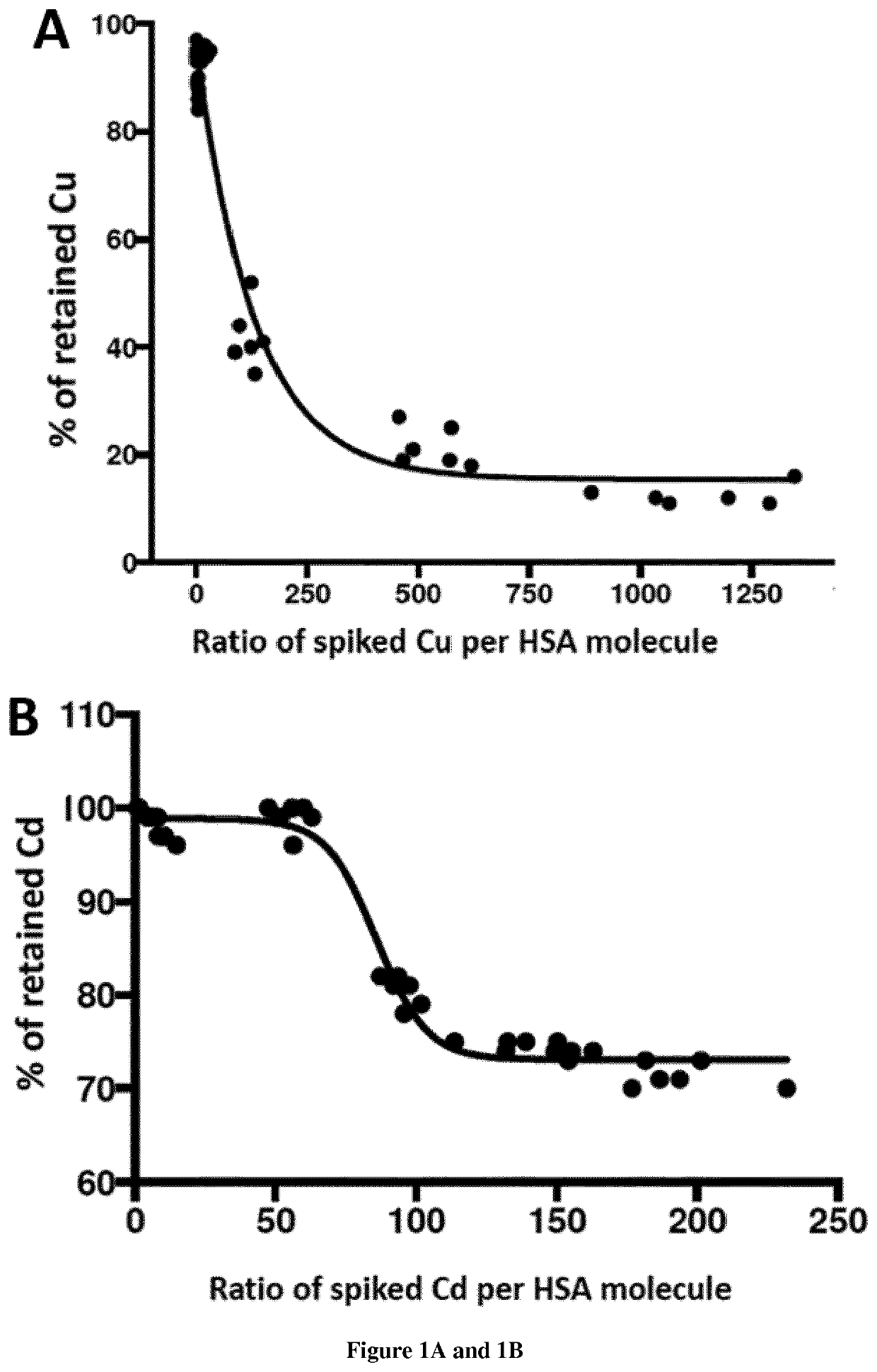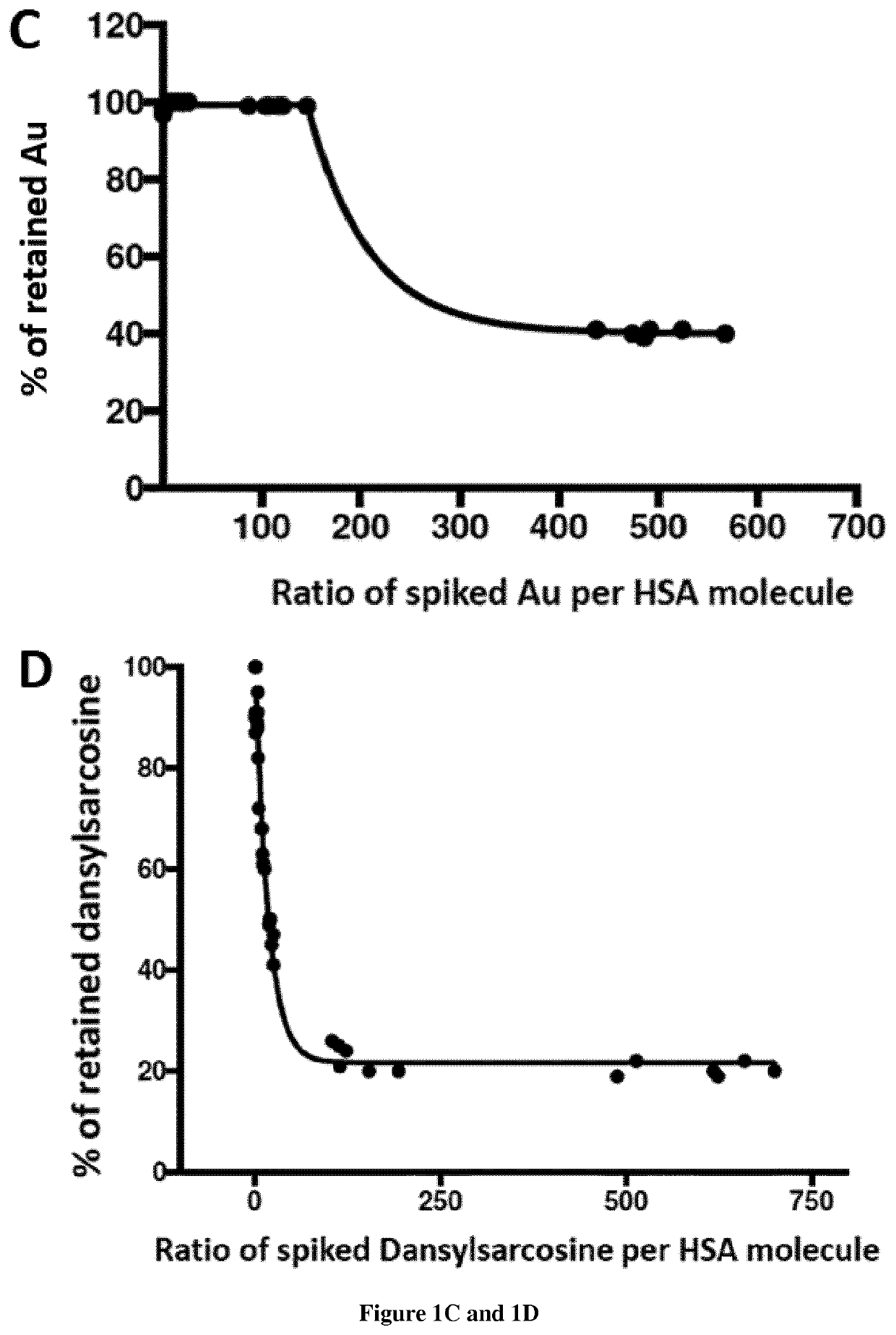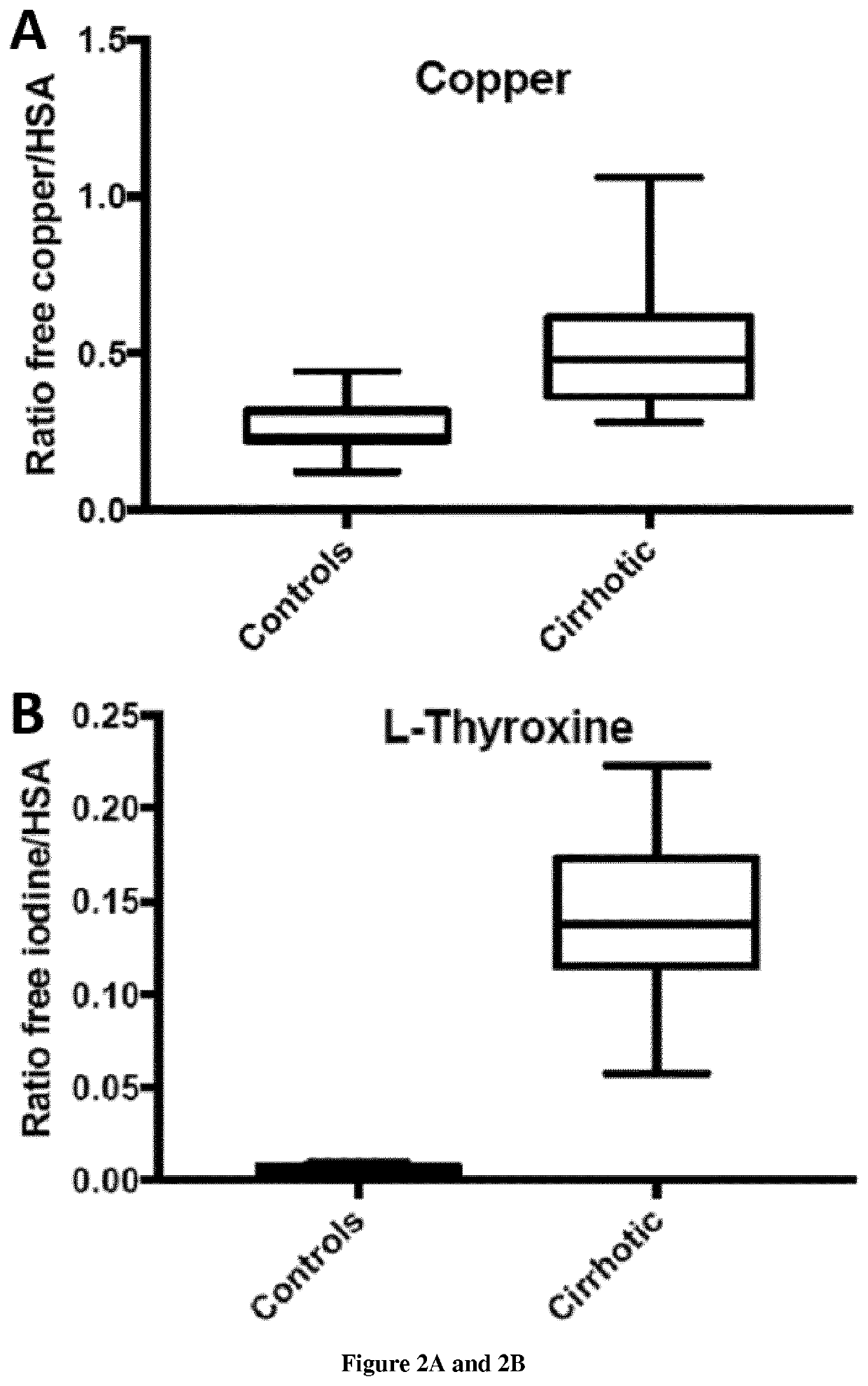Methods and kits for detecting liver dysfunction in a subject
a liver and subject technology, applied in the field of methods and kits for detecting liver dysfunction in subjects, can solve problems such as false negative diagnosis
- Summary
- Abstract
- Description
- Claims
- Application Information
AI Technical Summary
Benefits of technology
Problems solved by technology
Method used
Image
Examples
Embodiment Construction
[0006]The first inventors' hypothesis is that all the principal HSA modifications, due to a diversity of liver diseases, can be indirectly revealed by investigating the binding capacity for different ligands. It was reported that each of the following ligands has a specific binding site on HSA: (i) gold (Au) binds preferentially to Cys34; (ii) copper (Cu) to the N-terminal binding site, (iii) cadmium (Cd) to the multi-metal binding site, (iv) L-thyroxine has 4 specific binding sites (Tr1-Tr4), and (v) dansylsarcosine was reported to bind to drug site 3 or to the diazepam-binding site [8]. Their second hypothesis is that modifications of the HSA conformation and binding properties appear at early stages of liver cell injuries, since HSA is exclusively synthesized and matured in hepatocytes.
[0007]Therefore, the inventors believe that the most frequent HSA structural modifications can be detected by measuring the free (unbound) ligands after spiking patient serum with solutions contain...
PUM
| Property | Measurement | Unit |
|---|---|---|
| flame temperature | aaaaa | aaaaa |
| total flow rate | aaaaa | aaaaa |
| mass | aaaaa | aaaaa |
Abstract
Description
Claims
Application Information
 Login to View More
Login to View More - R&D
- Intellectual Property
- Life Sciences
- Materials
- Tech Scout
- Unparalleled Data Quality
- Higher Quality Content
- 60% Fewer Hallucinations
Browse by: Latest US Patents, China's latest patents, Technical Efficacy Thesaurus, Application Domain, Technology Topic, Popular Technical Reports.
© 2025 PatSnap. All rights reserved.Legal|Privacy policy|Modern Slavery Act Transparency Statement|Sitemap|About US| Contact US: help@patsnap.com



